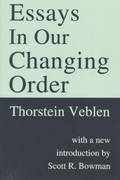About a week later, on May 7, American announced that when TWA's promotion expired, it intended to raise fares by 10 to 25 percent in the 1,500 markets where it earlier had matched TWA. Other airlines matched American's move. A spokesperson for TWA announced its intention to study the proposal, while Michael Gunn of American reiterated, \"We will remain competitive.\" On May 21, 1992, TWA allowed its discount fares in the 1,500 markets to lapse. Less than a week later, on May 26, while Bob Crandall of American was working out on his treadmill, an announcement of a limited-time promotion by Northwest Airlines appeared on the morning news. At one time, Northwest had been one of the industry's best managed and most protable airlines. However, its acquisition of Republic Airlines in the mid-19803 had been expensive (costing $1 billion), and difculties integrating Republic's workforce and administrative systems had led to noticeable deterioration in Northwest's service. (Among business travelers the airline had become known as \"Northworst.\") Saddled with an aging eet and striving to make do with an oddly congured route structure that connected fewer cities and had fewer transcontinental ights than the Big Three, in the spring of 1992 Northwest was clearly struggling. Northwest's promotion, \"Grown-Ups with Kids Fly Free,\" which applied to many, though not all, of its ights, in effect offered many vacation travelers a 50 percent price cut. Crandall's reaction\"Son of a bitch!\"summarized his disdain for this kind of gimmicky fare promotion that he had hoped his Value Pricing plan would wipe out. Throughout the day, industry insiders and observers awaited American's response: Would Crandall match Northwest's limited promotion, forcing American into creating a new fare categorysomething it vowed not to do seven weeks before when the Value Pricing plan was announced? Or would it, as some observers were speculating, \"go nuclear\" and cut prices across the board? The answer was forthcoming within 24 hours: American announced a 50 percent price cut on every seat on every route for ights through September 13, provided tickets were bought by June 5. All major airlines matched American's cuts, and within days, every major airline's inventory of seats for the entire period was sold out







